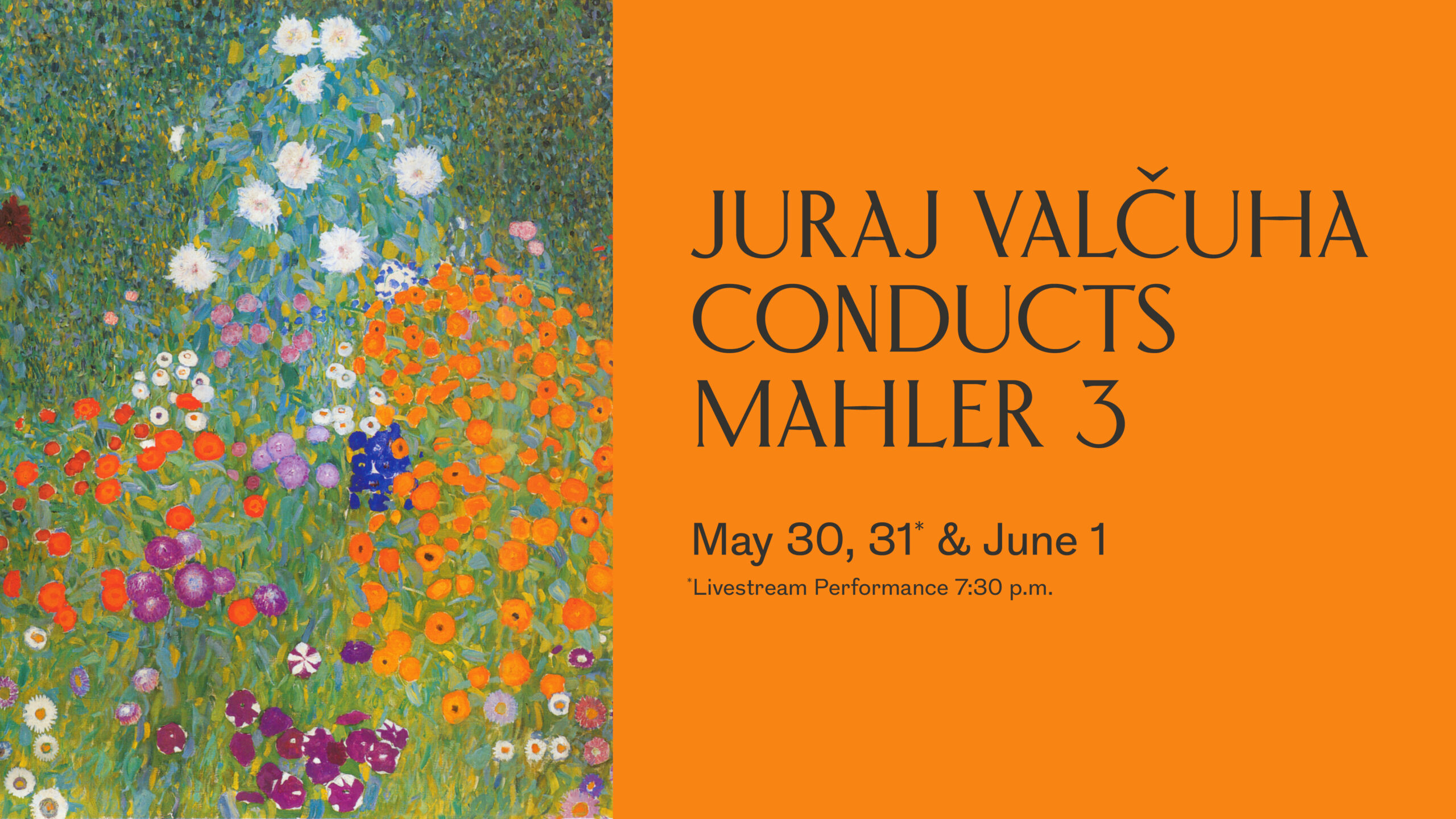
April 9, 2025
What the Flowers and the Animals Told Mahler in his Symphony No. 3

On May 30, 31 & June 1, the Houston Symphony closes its 2024–25 Season with a sonic wonder unlike anything else in music: Mahler's Symphony No. 3.
Gustav Mahler's Symphony No. 3 radiates dynamism, charm and eloquence, and it closes with one of the most glowing slow movements in the orchestral repertoire. But let's be up-front about one thing: It's a journey.
Laid out in six movements, the symphony typically clocks in at 90-plus minutes. The ruggedly vigorous first movement takes a half-hour – a scale that astonished even Mahler. As he worked on that massive opening, he told a friend that he had tried to resist going big. But the symphony “has outgrown me and sweeps me along,” Mahler explained. “It is as though the torrent of creation has proved to be an irresistible force, after having been pent up for years. There is no escape!”
But don't be intimidated, newcomers to the piece. Mahler himself left us guideposts to the musical voyage. Even he needed them, because he had aimed at a towering goal: to depict man and his troubles in the midst of the natural world that envelopes him and the spiritual world that offers him hope.
As the symphony took shape, Mahler created a verbal outline to help point his way. Here's the final version, slightly abridged:
“A Midsummer Morning's Dream”
- First movement: Summer marches in
- Second movement: What the flowers of the field tell me
- Third movement: What the animals of the forest tell me
- Fourth movement: What man tells me
- Fifth movement: What the angels tell me
- Sixth movement: What love tells me
Simply keeping those titles in mind might help you tune in to the music's message. But a further glimpse at each movement reveals even more.
Summer marches in: The weighty, minor-key music that follows the opening fanfare might sound to some listeners like one of the fatalistic composer's funeral marches. But Mahler actually had nature's irresistible power in mind. When a protege, arriving at the mountain retreat where Mahler wrote the symphony, gazed up at nearby peaks, Mahler told him not to bother looking: “It is all in the music,” Mahler said. He told another friend: “The movement never stops advancing. As it approaches, it becomes louder and louder, gathers strength and grows like an avalanche until its din breaks above our heads in powerful rejoicing.”

What the flowers of the field tell me: The next four movements are much shorter. Here, the music's airiness and lilt evoke the pleasure that Mahler, who loved hiking and swimming, found in the outdoors. Though agitation breaks in, serenity prevails.

What the animals of the forest tell me: Listen for bird calls and a donkey's bray. Mahler based this droll movement on “Relief in Summer,” a folk poem about a cuckoo that dies and a nightingale that sings gracefully in its place. Some of the symphony's most magical moments come when the bustle gives way to faraway-sounding solos for the fluegelhorn, a mellow relative of the trumpet: Mahler told a friend that he had loved the fluegelhorn ever since hearing it in military bands when he was a boy.
What man tells me: Now vocalists join in. First, a contralto sings Mahler's dark-hued setting of a poem from Friedrich Nietzsche's Thus Spake Zarathustra: “The world is deep, and … deep is its grief. Joy is still deeper than the heart's suffering! … All joy seeks eternity – seeks deep, deep eternity.”
What the angels tell me: Jubilant bells wipe away the nocturnal stillness. As a boys' choir sings along with the chimes, a women's choir adds a jaunty song about angels celebrating forgiveness from sin. The contralto breaks in lamenting her wickedness, and the choir assures her: “Fall on your knees and pray to God. Love only God forever, and you will attain supreme joy!”

What love tells me: If ever a piece of music needed no explanation, this is it. The vocalists fall silent, and the strings intone a broad, heartfelt theme that grows more and more radiant as the rest of the orchestra takes it up. In the score, Mahler repeatedly exhorts the musicians to fill their parts with feeling. “Very expressively sung,” he writes over the violins' first phrase; “very expressive and solemn,” he tells the cellos right after that. On the last page, as the entire orchestra wells up fortissimo: “Not with raw force. Full, noble tone.”
Mahler, who ultimately believed in letting his music speak for itself, dropped his subtitles when the score went into print. But a decade after completing the symphony, he still invoked his verbal summary. So why shouldn't we let it guide us, too? Or we can turn to the summing-up he sent to a soprano he was in love with.
“My work,” Mahler wrote, “is a gigantic musical poem. … It begins at the heart of inanimate nature and progresses to the love of God!”
— Steven Brown







